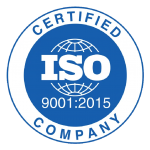The product packaging market has changed significantly over the past decades. The purpose of label production and packaging is no longer just to protect and inform. Brand owners have discovered the selling power of eye-catching labels and packaging. In today’s market where thousands of seemingly similar products compete for customers’ attention, strong shelf-appeal is vital.
It’s not only branding and graphical requirements that have posed challenges to printers and converters. Several trends have caused the industry to move towards a broader variety of Stock Keeping Units (SKUs) and shorter run lengths. Rapidly increasing product variety is a direct result of industry globalization, brand owners targeting ever smaller segments of customers, the ever-growing importance of event marketing, and increasingly short product life cycles. In addition to this, efforts to reduce working capital requirements have led companies to reduce their stocks, leading to just-in-time inventory policies. As a result, Access Labels has stepped up to meet the demands of the market offering Digital Label & Package printing capabilities.
Product decoration technology has not been standing still. Digital printing technology, for one, is capable of meeting most, if not all, of the market’s requirements while still maintaining profitability. By nature, it allows unlimited variability. Not only is it uniquely suited to the production of multi-version labels, the absence of set-up costs makes it ideal for cost-effective short-to-medium print runs. Digital printing technology is therefore a great complement to flexo, letterpress, and offset printing.
But not only that — its many features and advantages give you access to a whole range of new business opportunities!
Advantages Of Digital Label Printing
- Quick Turnaround – Digital label printing doesn’t require plates which means you don’t have to pay for a printing plate for each color on the label. No plates also means a shorter setup time so your labels are printed faster, and you receive them sooner.
- High Quality – When it comes to product labels, vibrant high-quality graphics command the most attention. Our Xeikon digital presses print at a resolution of almost double that of traditional flexographic label, so your labels end up with crisp, clear images and life-like colors.
- Price – No plates and less press setup time means the costs for digital label printing are relatively low for short run labels as compared to flexographic labels.
- Short Run Labels Capability – This cost benefit is maximized for relatively small quantities of custom labels or “short-run labels.” Another advantage of digital printing is that you can order only the amount of labels you need, rather than ordering labels in bulk simply to get the best price.
- Design Flexibility – In order to remain competitive, you should regularly examine whether your design is effective or not in attracting your target audience. The cost of printing new label designs on a flexographic press can be hurt your bottom line due to plate charges and setup fees. If you have multiple product label designs, costs can add up even quicker. With digital printing, there are no plate or setup fees, so we can start printing your labels right away.
With the Xeikon 3030, there is no trade-off between quality and productivity — it simply excels in both. Engineered to perfection, the electrophotographic imaging process remains the industry standard for excellence and reliability.
That is why the Xeikon 3030 uses dry toner electrophotography. Well-engineered, robust, and dependable, it delivers impeccable quality at industry-best speeds.
- The Xeikon 3030 boasts a unique combination of features designed to increase productivity.
- Full rotary technology combined with variable repeat length allows printing at maximum speed, regardless of the size of the labels. It also allows printed labels of different formats and sizes in the same run.
- The print speed is unaffected by the number of colors used.
- An inline spectrophotometer ensures automatic density and register control, and allows fine-tuning during printing.


